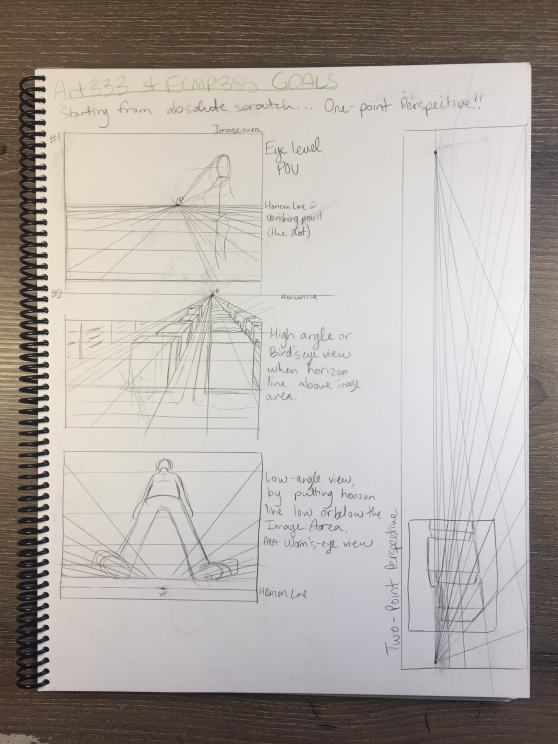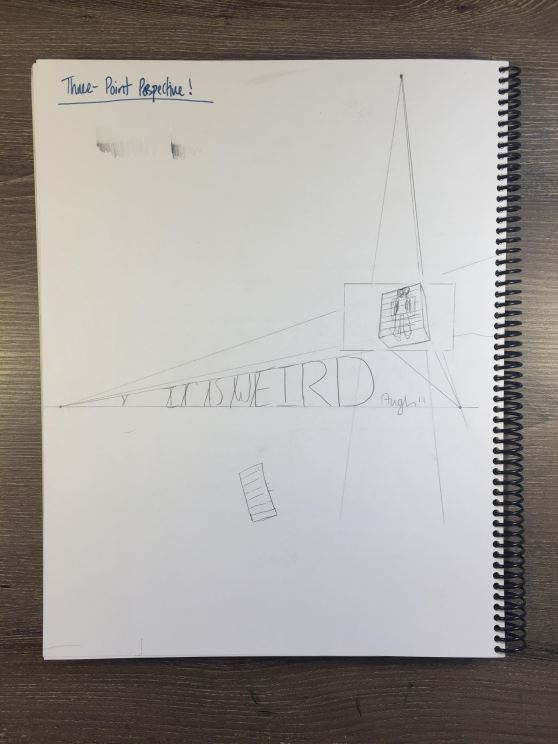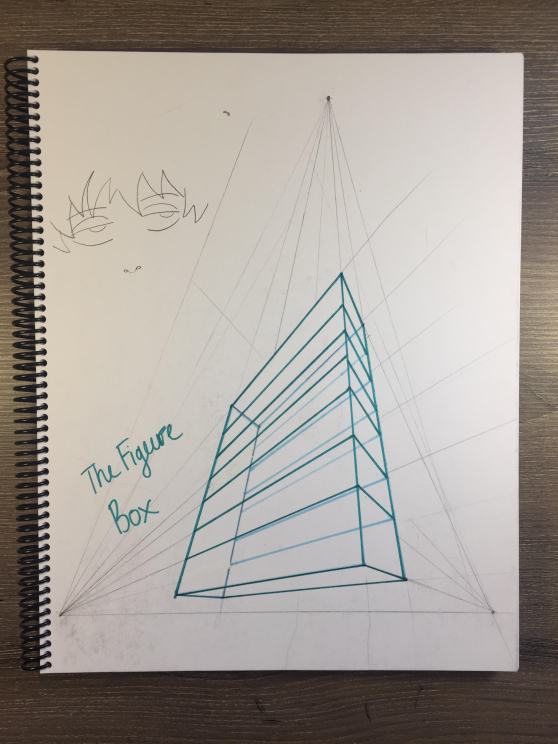For my latest art project, I chose to do a symbolic still life drawing as a form of a self portrait. For my objects, I chose 5 keys that come from varying stages in my life. Take a look at them below.
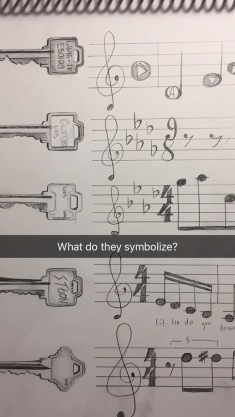
The first key at the top is from my childhood home. When I see that key, I think of my amazingly large back yard that was filled with plants and bushes and fruit and adventure. I had a playhouse in the middle of what I called, “the woods,” which was an area in my back yard that was sort of “protected” by a wall of trees around all sides. When I ran around in those trees I always imagined myself as Link, the protagonist of the Legend of Zelda game series, battling monsters and always saving the princess. My parents made me a tire swing, a rope to climb, and a pile of stumps to climb around on. It was awesome for a little adventurer like me. The song beside the key is the “Song of Time” from the Ocarina of Time.
The second is from when I grew up in Saskatoon, from grades 5-12. It was the longest I had ever stayed in one place, so I had the opportunity to get very close to my family and friends there. It is home, to me.
The third key is from when I graduated high school and left all of my friends and family behind to move to Regina and start my journey through university. It was a really weird time in my life, because I had never felt so alone. This is when I met my ex-boyfriend.
The next key is from his dad’s house in Saskatoon. It was strange, because he was from Regina and helped me settle into the city. He lived with his mother, but his father and all of his siblings were based in Saskatoon. It reminded me of my home, too, and so I connected with it. The relationship wasn’t a healthy one, so the angry “STOON” scratched into it was included to capture the nature of the relationship.
The final key is most important to me. It was the key to my first place on my own. It was where I learned the most about me as an individual because I was learning to live on my own.
For my still life, I wanted to position and draw these keys in such a way that it would capture the emotion and meaning behind all of these keys and what they’ve meant to me and my life. I thought about this for literally weeks, unable to find a way to portray my keys in the perfect way. Finally, I happened to run into this painting:
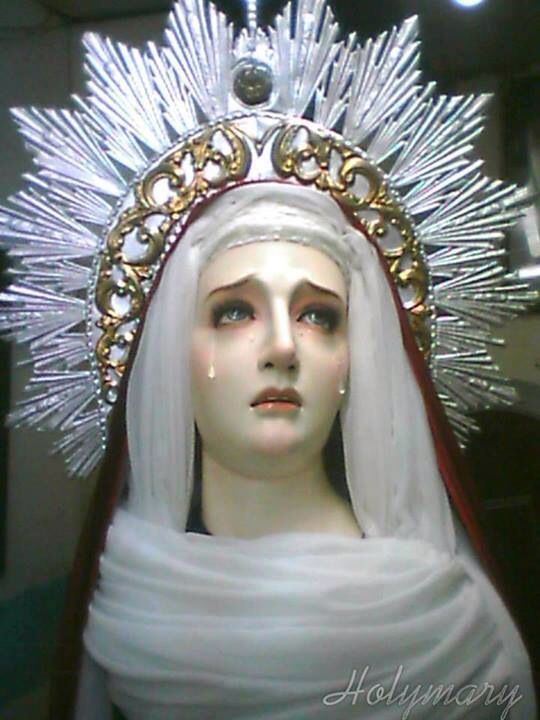
I just found it so serene and beautiful that it inspired me, and so I envisioned my keys as a crown on my head.
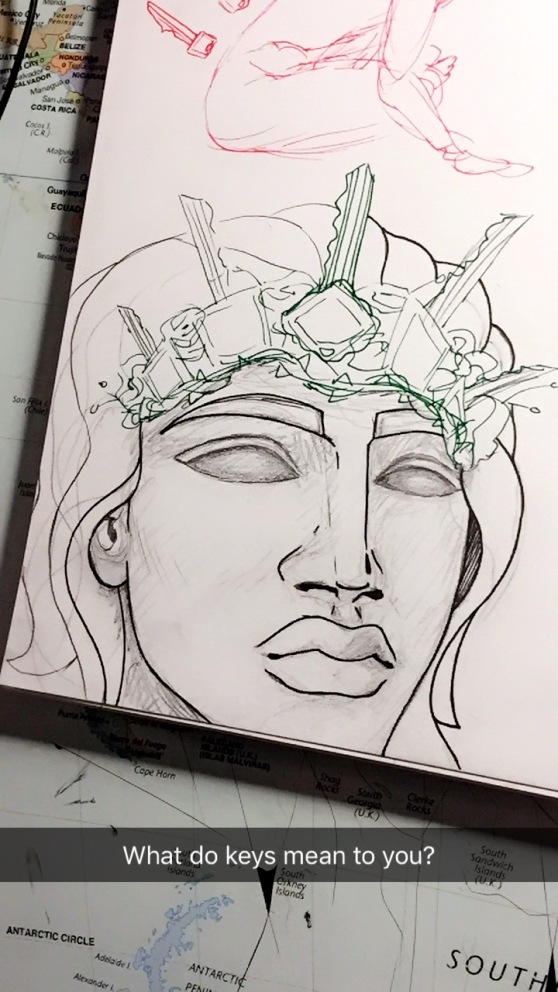
I started asking my friends what keys meant to them for ideas…
Posing my keys as a crown says to me that I’m owning everything I’ve experienced and wearing it with pride. To me, it meant moving forward. I started asking myself, “What else will I draw with the crown? Flora? Fauna? What about other objects? I can draw other things. Oh, but it has to have even symbolic weight, so it has to seriously imply something about my life.”
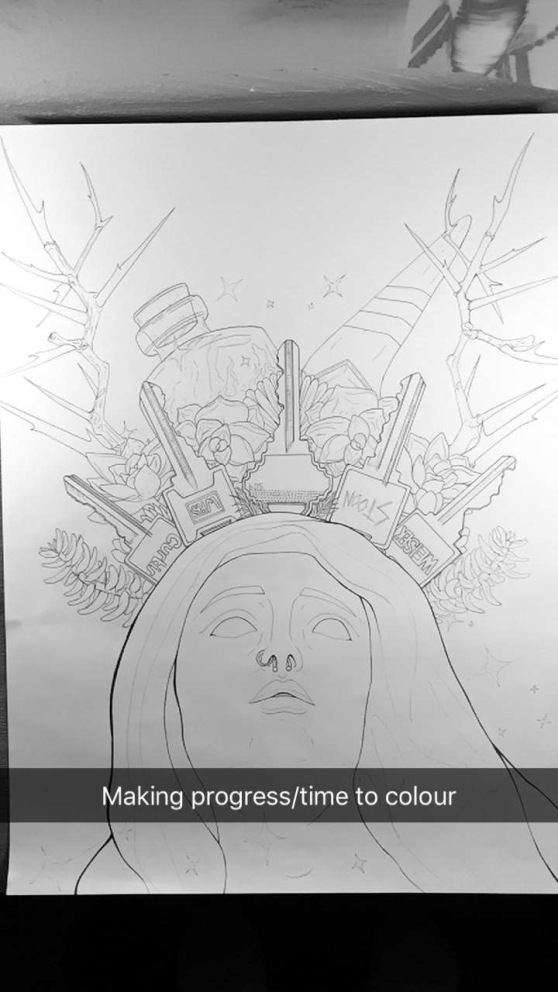
I really wanted to draw flora of some kind, but I needed it to contrast in some way to myself, because I do not view myself as flourishing and I do not currently feel alive in any sort of symbolic way. Rather, I feel as though I’m running out of steam and about to undergo some sort of epic change in my life. So, I made the decision to draw myself as a statue, and my crown would be garnished with live succulents. I then thought, “Hmm, I want to draw antlers around the edge of the crown to protect the succulents, but I also want to keep my ‘alive’ theme up top.” So, I changed it to thorns on branches. The other objects I included were: a bottle of blue fire, a pink fairy, the fairy boomerang, and a daisy in the center.
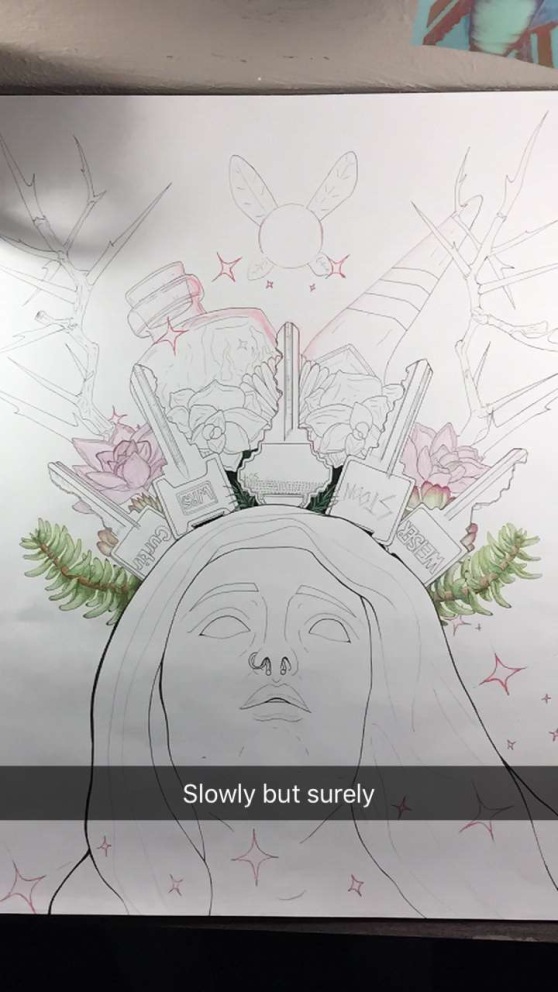
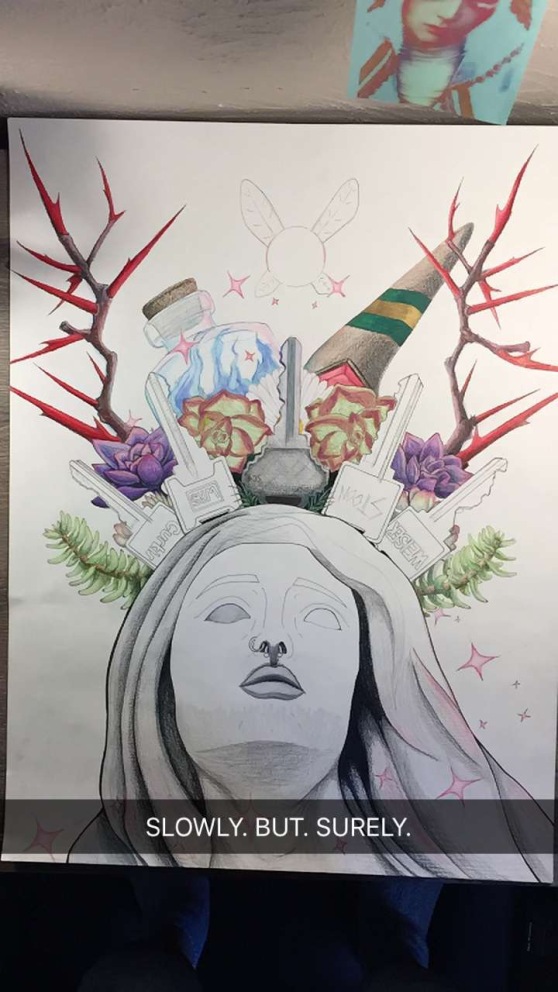
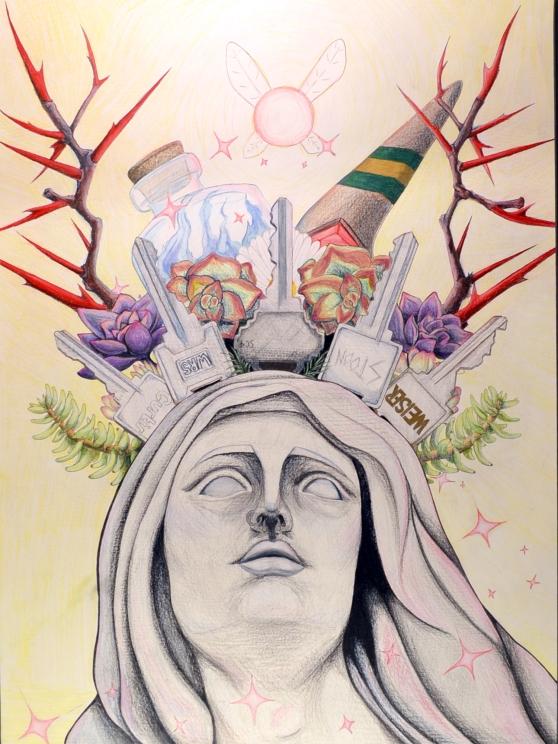
The thorns are bright red, presumably from scratching up any hands that come near the succulents in the crown.
I also found out through this experience that I have no idea how to effectively use pencil crayons. I feel like I completely ruined it by trying to colour it. I wanted to use watercolour initially, but when I opened my watercolours I found out that they were somehow rotten. They wouldn’t blend well, and there were solid chunks throughout the tubes. The only other medium I had was pencil crayon. I didn’t think of it when I started the drawing, but I worked on a textured surface, and with thin paper, which completely affected the quality of my finished product. The texture made my colouring look quite poor and grainy, when it would have turned out much smoother if I had worked on a perfectly flat surface. I also realized that even if I wanted to work on a perfectly solid, flat surface, I wouldn’t be able to because I don’t have one. All tables I have are marked up or wooden, thus have a grain to it. I really wish I would have had more time to work on this, because I was really proud of my line art before I started colouring it. Oh well.
However, I’ve never drawn any of these objects before, so I was really proud of myself for being able to draw something so new to me. My goal for this learning project is to really push myself, and granted, I certainly drifted away from what I was initially wanted to practice (drawing comic characters in dynamic positions) but at least I’m still doing something that I can officially say I couldn’t do before.
Go me!
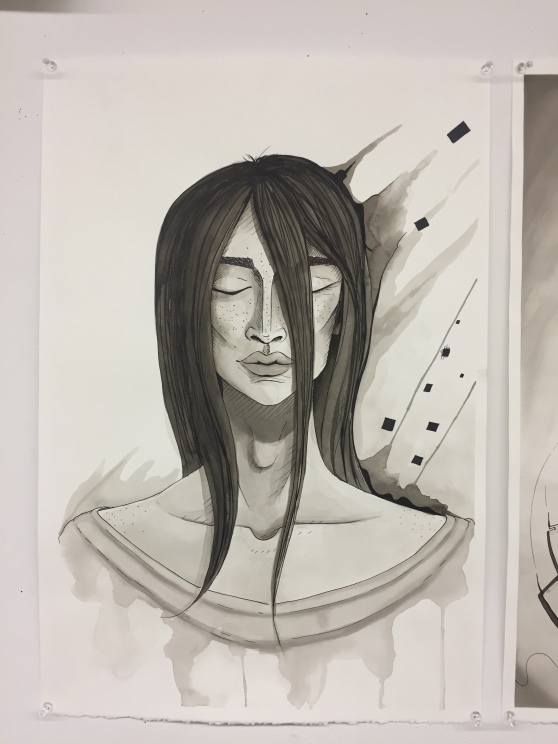
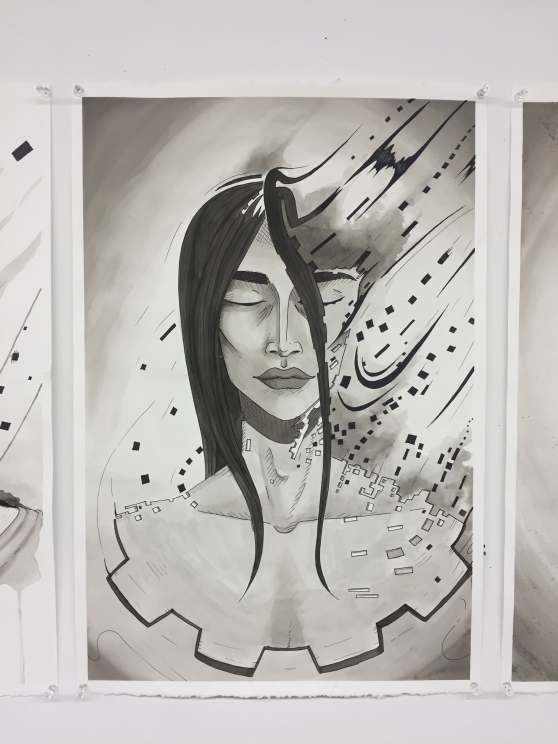

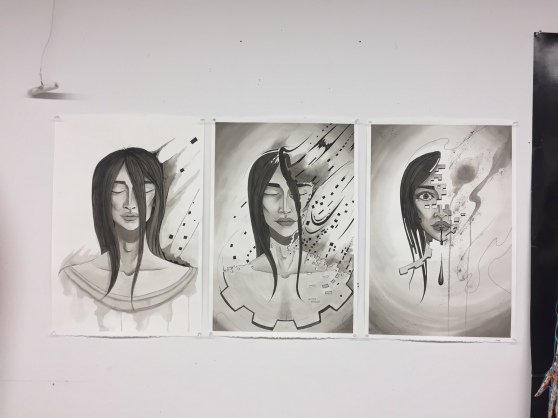
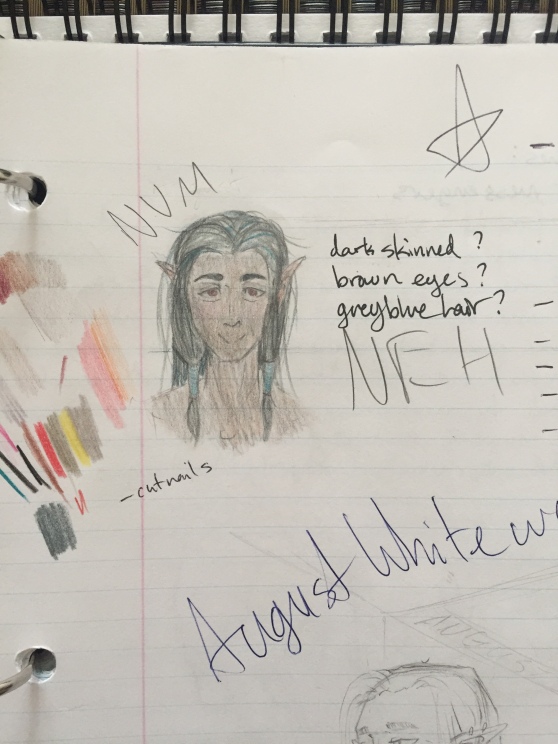
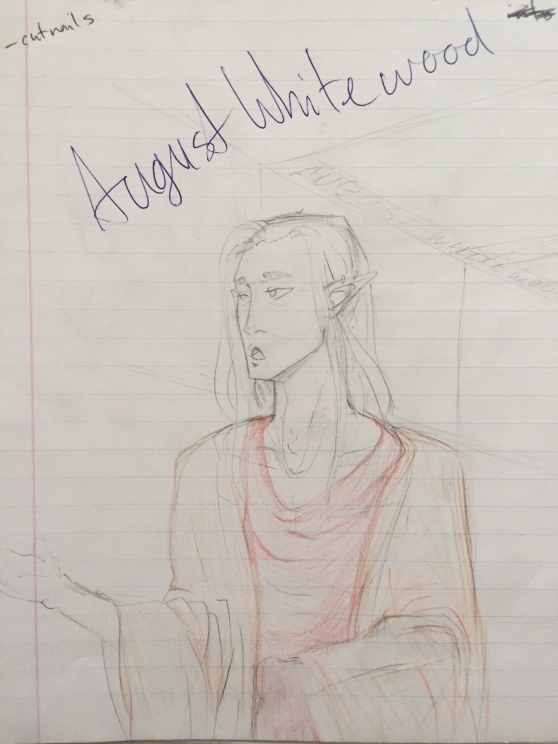
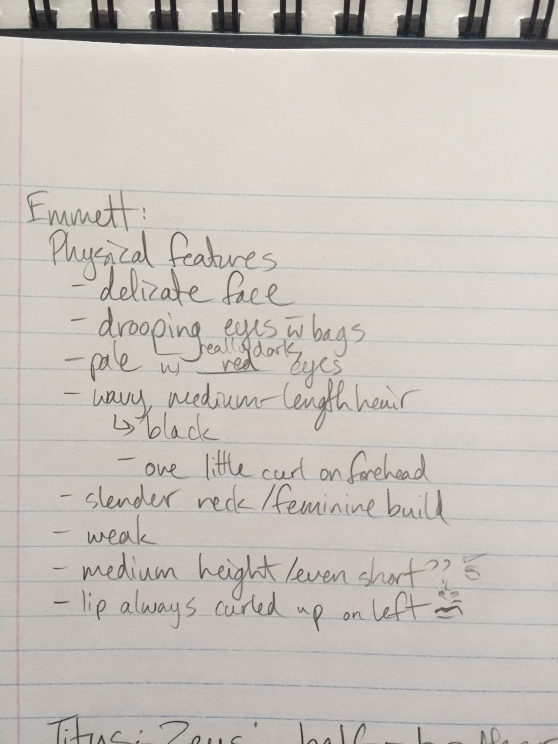
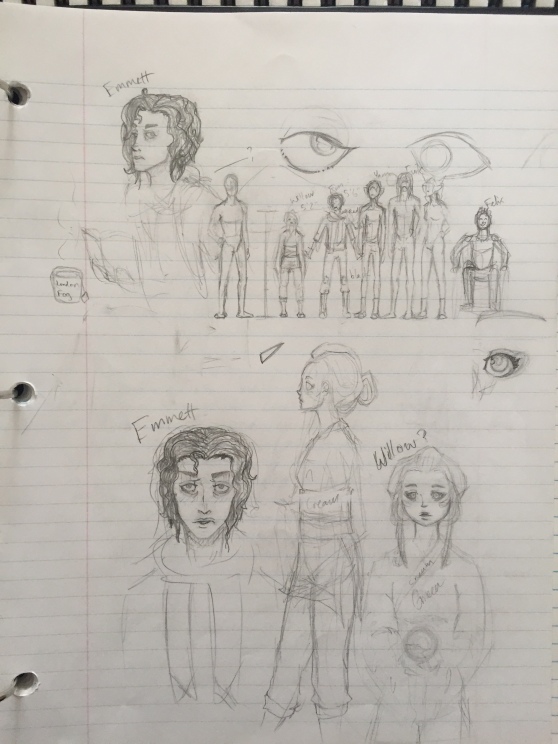
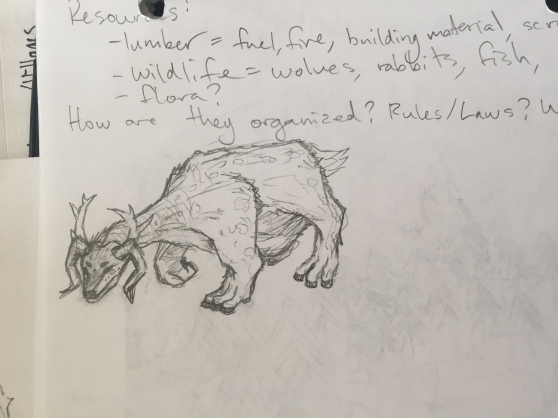

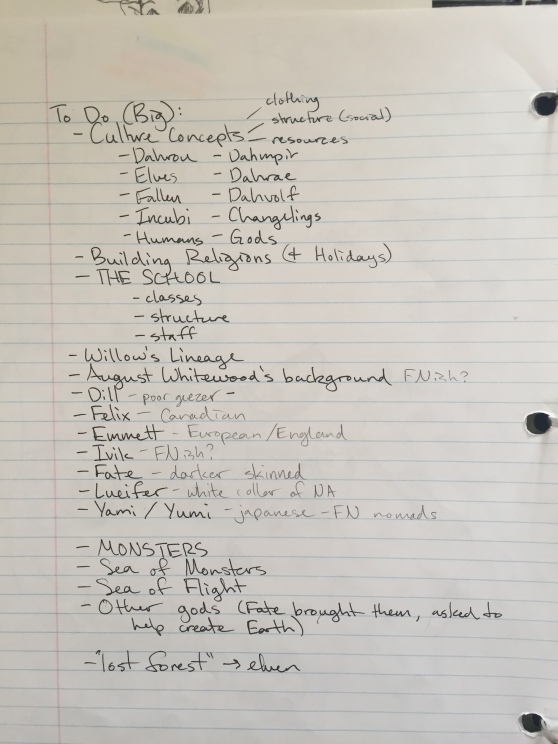

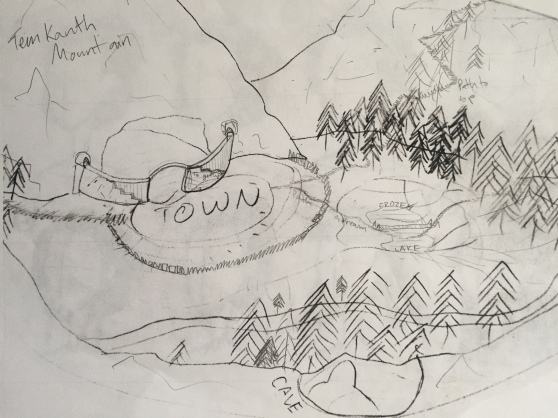




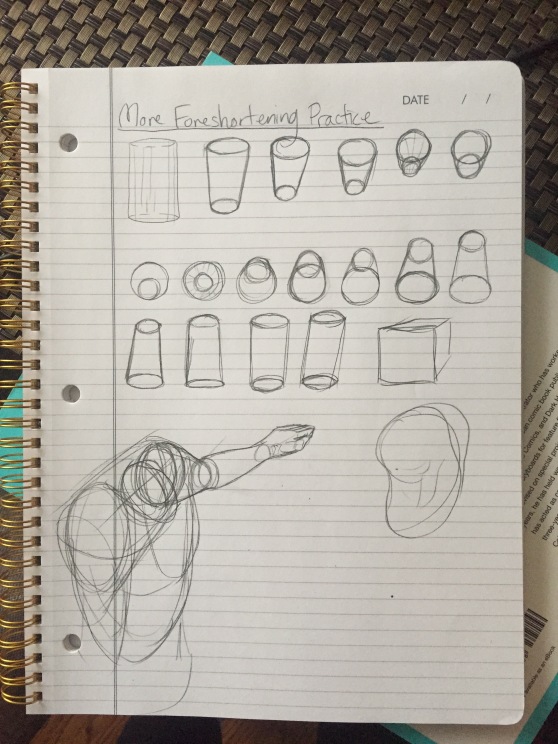

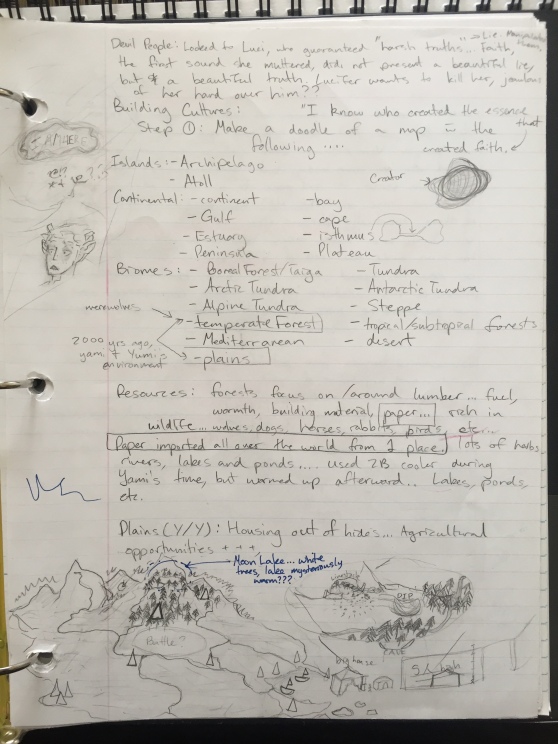

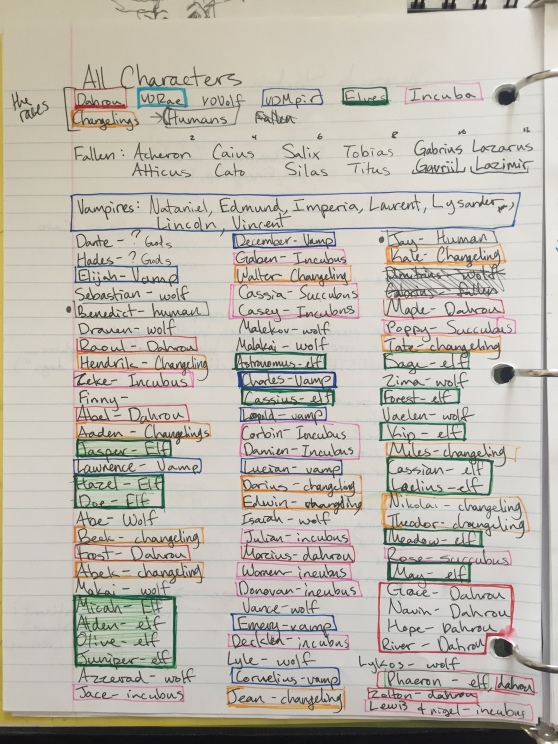
 Done on Photoshop CS6 with a Wacom Bamboo Tablet!
Done on Photoshop CS6 with a Wacom Bamboo Tablet!







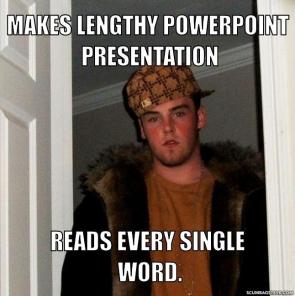


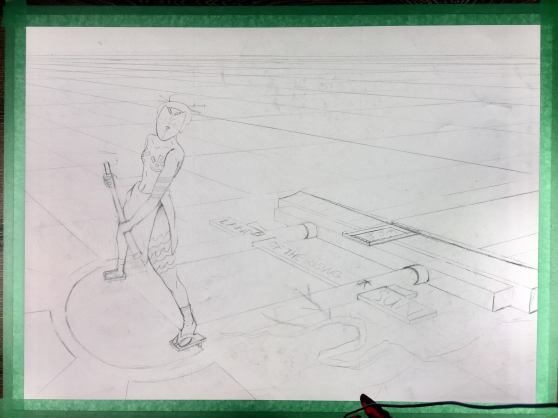

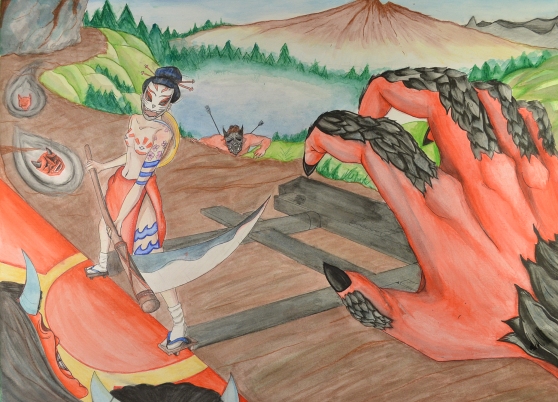
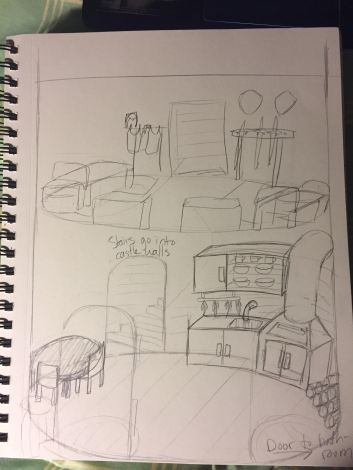 It is totally out of proportion, and the perspective is all wrong. So, with that in mind I can see that going back and working on the basics has affected my work at least a little bit, which pleases me! However, it was really hard, and it took me multiple tries to get the perspective right on my geisha, so I think what I am going to do moving forward is work on just practicing basic perspective drawings of simple objects (boxes and buildings) until horizon lines, vanishing points, and rulers aren’t so intimidating anymore. That’s all for now! I’ll be checking in soon with more art next week!
It is totally out of proportion, and the perspective is all wrong. So, with that in mind I can see that going back and working on the basics has affected my work at least a little bit, which pleases me! However, it was really hard, and it took me multiple tries to get the perspective right on my geisha, so I think what I am going to do moving forward is work on just practicing basic perspective drawings of simple objects (boxes and buildings) until horizon lines, vanishing points, and rulers aren’t so intimidating anymore. That’s all for now! I’ll be checking in soon with more art next week!


